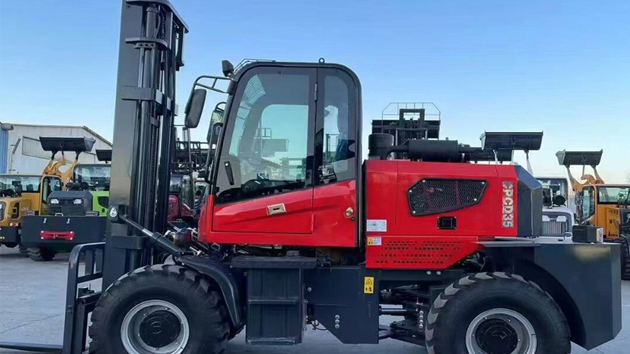The Future of Heavy Lifting: Hydraulic Rough Terrain Forklifts
2025-07-03 03:45:25
Hydraulic Rough Terrain Forklifts are engineered to tackle the toughest job sites, from construction zones to agricultural fields. Unlike standard forklifts, these machines rely on powerful hydraulic systems to deliver exceptional lifting capacity and stability on uneven terrain. The integration of high-torque engines and reinforced tires ensures optimal traction, even in muddy or rocky conditions. Industry data shows a 12% annual growth in demand for hydraulic rough terrain forklifts, driven by expanding infrastructure projects worldwide.
One of the standout features of hydraulic rough terrain forklifts is their adaptability. Advanced hydraulic controls allow operators to adjust lifting speeds and precision with ease, making them ideal for handling bulky or irregularly shaped loads. Recent innovations include load-sensing hydraulic pumps, which optimize power distribution based on real-time demands. According to a 2023 market analysis, companies using hydraulic rough terrain forklifts report a 20% reduction in operational downtime compared to conventional models.
The construction sector remains the largest adopter of hydraulic rough terrain forklifts, accounting for nearly 45% of global sales. These machines excel in transporting heavy materials like steel beams and concrete blocks across unstable ground. Additionally, the agriculture and forestry industries are increasingly leveraging hydraulic rough terrain forklifts for tasks such as log handling and feed distribution. A recent survey revealed that 78% of fleet managers prioritize hydraulic systems due to their durability and low maintenance requirements.
Looking ahead, manufacturers are focusing on eco-friendly advancements in hydraulic rough terrain forklifts. Hybrid hydraulic systems, combining electric and diesel power, are gaining traction as companies seek to reduce emissions. Predictive maintenance powered by IoT sensors is another emerging trend, enabling real-time monitoring of hydraulic components. With these innovations, the hydraulic rough terrain forklift market is projected to exceed $5.2 billion by 2027, cementing its role as a cornerstone of industrial material handling.












